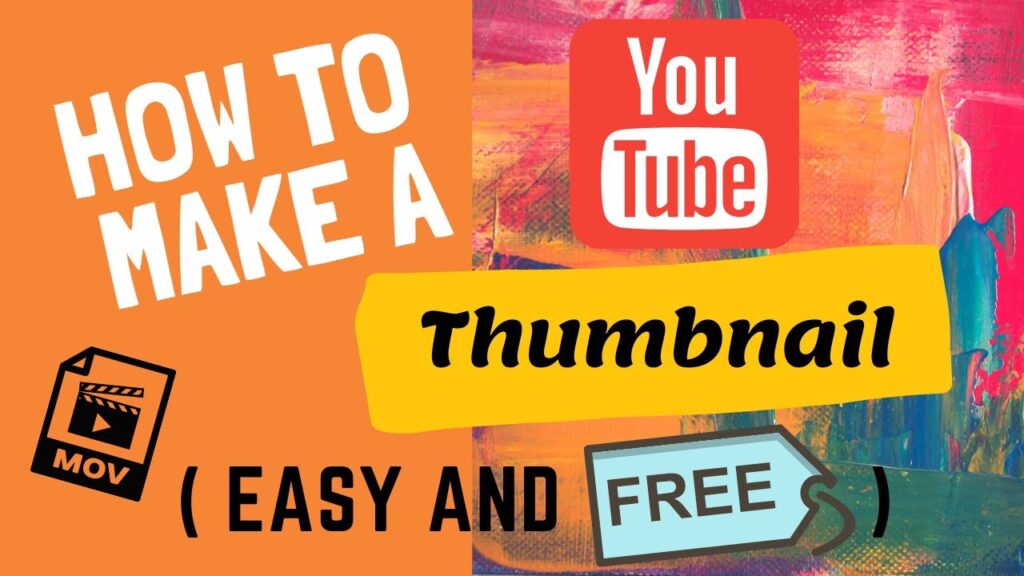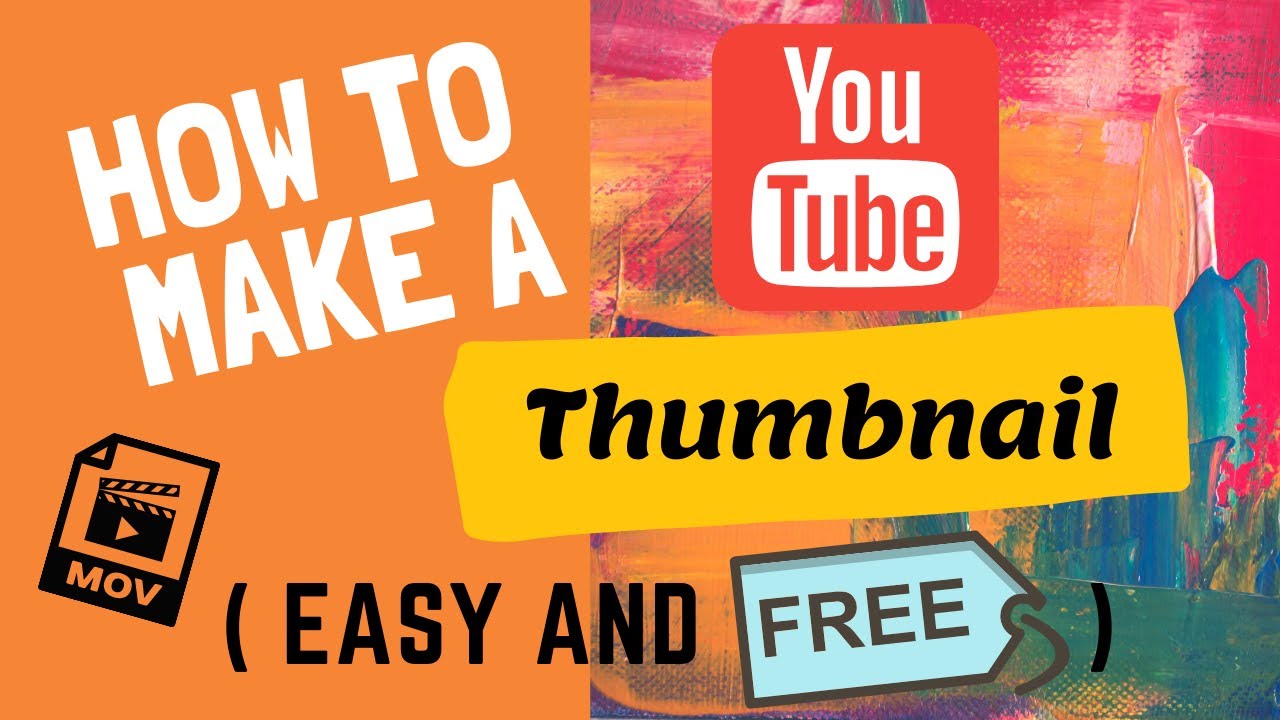
How to Create Video Thumbnails That Drive Clicks: A Comprehensive Guide
In the digital age, where attention spans are shorter than ever, a compelling video thumbnail is crucial for attracting viewers. A well-designed thumbnail can be the difference between a video being watched and being scrolled past. This guide provides a comprehensive overview of how to create video thumbnails that capture attention, accurately represent your content, and ultimately drive clicks.
From understanding the fundamental principles of design to utilizing the right tools and techniques, we’ll cover everything you need to know to create eye-catching thumbnails that boost your video’s performance. Whether you’re a seasoned content creator or just starting out, this guide will equip you with the knowledge and skills to master the art of video thumbnail creation.
Why Video Thumbnails Matter
Before diving into the how-to, let’s understand why video thumbnails are so important. Think of them as the cover of a book or the storefront of a business. They’re often the first impression potential viewers have of your video. Here’s why they matter:
- First Impression: As mentioned, your thumbnail is often the first thing people see. A visually appealing thumbnail can pique their interest and encourage them to click.
- Increased Click-Through Rate (CTR): A well-designed thumbnail can significantly increase your CTR, which is the percentage of people who click on your video after seeing it. Higher CTR leads to more views.
- Brand Recognition: Consistent thumbnail design helps build brand recognition. Viewers will start to associate your thumbnails with your channel, making your videos more easily identifiable.
- Platform Algorithms: Platforms like YouTube use CTR as a ranking factor. A higher CTR can improve your video’s visibility in search results and recommendations.
Understanding the Elements of Effective Video Thumbnails
Creating effective video thumbnails involves understanding key design elements and how they work together. Here are some essential components to consider:
Visual Hierarchy
Visual hierarchy refers to the arrangement of elements in a way that guides the viewer’s eye. Use size, color, and contrast to emphasize the most important information.
Color Palette
Choose a color palette that is visually appealing and consistent with your brand. Consider using contrasting colors to make your thumbnails stand out. Avoid using too many colors, as this can make your thumbnail look cluttered.
Typography
Use clear, legible fonts that are easy to read at a small size. Choose fonts that complement the overall design and convey the tone of your video. Keep the text concise and focused on the key message.
Imagery
Use high-quality images that are relevant to your video’s content. Consider using close-up shots of faces or action-packed scenes to capture attention. Avoid using blurry or pixelated images.
Composition
Pay attention to the composition of your thumbnail. Use the rule of thirds to create visually balanced and engaging images. Avoid placing important elements in the center of the frame.
Step-by-Step Guide: How to Create Video Thumbnails
Now that you understand the key elements, let’s walk through the process of how to create video thumbnails that drive clicks:
Step 1: Understand Your Audience and Content
Before you start designing, take the time to understand your target audience and the content of your video. What are their interests? What are they looking for? What message do you want to convey?
Knowing your audience and content will help you make informed decisions about the design of your thumbnail. For example, if your video is about gaming, you might use bright colors, bold typography, and images of popular game characters. If your video is about finance, you might use more professional-looking imagery and fonts.
Step 2: Choose the Right Tools
There are many tools available for creating video thumbnails, ranging from free online editors to professional design software. Here are a few popular options:
- Canva: A user-friendly online design tool with a wide range of templates and design elements.
- Adobe Photoshop: A powerful professional design software with advanced editing capabilities.
- GIMP: A free and open-source image editing software that offers many of the same features as Photoshop.
- PicMonkey: Another online design tool with a focus on photo editing and graphic design.
Choose a tool that fits your skill level and budget. If you’re just starting out, Canva is a great option. If you have more experience and need more advanced features, Photoshop or GIMP might be a better choice. [See also: Best Video Editing Software for Beginners]
Step 3: Select a High-Quality Image
The image you choose for your thumbnail is crucial. It should be visually appealing, relevant to your video’s content, and high-resolution. You can either take a screenshot from your video or use a stock photo.
If you’re using a screenshot from your video, make sure it’s a clear and compelling shot. Avoid using blurry or pixelated images. If you’re using a stock photo, choose one that is relevant to your video’s content and visually appealing. Sites like Unsplash and Pexels offer high-quality, royalty-free images.
Step 4: Add Text and Graphics
Adding text and graphics to your thumbnail can help convey your video’s message and make it more visually appealing. Use clear, legible fonts that are easy to read at a small size. Keep the text concise and focused on the key message.
Consider using contrasting colors to make your text stand out. You can also add graphics like arrows, borders, or icons to draw attention to specific elements. Just be careful not to overcrowd your thumbnail with too much text or too many graphics.
Step 5: Optimize for Different Platforms
Different platforms have different thumbnail size requirements. Make sure your thumbnail is optimized for the platform you’re using. Here are the recommended thumbnail sizes for some popular platforms:
- YouTube: 1280×720 pixels (16:9 aspect ratio)
- Vimeo: 640×360 pixels (16:9 aspect ratio)
- Facebook: 1200×675 pixels (16:9 aspect ratio)
- Instagram: 1080×1080 pixels (1:1 aspect ratio) for feed, 1080×1920 pixels (9:16 aspect ratio) for stories
It’s also important to make sure your thumbnail looks good on different devices, including desktops, laptops, tablets, and smartphones. Preview your thumbnail on different devices to make sure it’s clear and legible.
Step 6: Test and Iterate
The best way to determine what works best for your audience is to test different thumbnails and see which ones perform the best. Use A/B testing to compare different thumbnail designs and see which ones generate the most clicks. YouTube offers built-in A/B testing tools for thumbnails.
Pay attention to your video’s analytics to see which thumbnails are performing well and which ones are not. Use this data to inform your future thumbnail designs. Don’t be afraid to experiment and try new things.
Tips for Creating High-Converting Video Thumbnails
Here are some additional tips to help you create video thumbnails that drive clicks:
- Use Faces: Human faces are naturally eye-catching. Consider using close-up shots of faces with engaging expressions.
- Use Contrasting Colors: Contrasting colors can help your thumbnail stand out from the crowd. Experiment with different color combinations to see what works best.
- Use Arrows and Borders: Arrows and borders can draw attention to specific elements in your thumbnail.
- Keep it Simple: Avoid overcrowding your thumbnail with too much text or too many graphics. Keep it simple and focused on the key message.
- Be Consistent: Use a consistent thumbnail design across all of your videos to build brand recognition.
- Be Honest: Make sure your thumbnail accurately represents the content of your video. Avoid using clickbait or misleading thumbnails.
Common Mistakes to Avoid When Creating Video Thumbnails
Here are some common mistakes to avoid when creating video thumbnails:
- Using Low-Quality Images: Blurry or pixelated images can make your thumbnail look unprofessional.
- Using Too Much Text: Overcrowding your thumbnail with too much text can make it difficult to read.
- Using Inconsistent Branding: Using inconsistent thumbnail designs can confuse your audience and make it difficult to recognize your videos.
- Using Clickbait Thumbnails: Clickbait thumbnails can attract clicks in the short term, but they can also damage your reputation in the long term.
- Ignoring Mobile Viewers: Make sure your thumbnail looks good on mobile devices. Many people watch videos on their smartphones, so it’s important to optimize your thumbnail for mobile viewing.
The Future of Video Thumbnails
As video platforms continue to evolve, the importance of video thumbnails will only continue to grow. With the rise of AI and machine learning, we can expect to see more sophisticated thumbnail optimization tools in the future.
These tools will be able to analyze your video’s content and automatically generate thumbnails that are optimized for click-through rate. They will also be able to personalize thumbnails based on individual viewer preferences. [See also: AI in Video Marketing: Trends and Predictions]
Conclusion
Creating effective video thumbnails is essential for attracting viewers and boosting your video’s performance. By understanding the key design elements, using the right tools, and testing different designs, you can create thumbnails that capture attention, accurately represent your content, and ultimately drive clicks. Remember to always prioritize quality, relevance, and consistency in your thumbnail design. By following the tips and guidelines outlined in this guide, you’ll be well on your way to mastering the art of video thumbnail creation.

